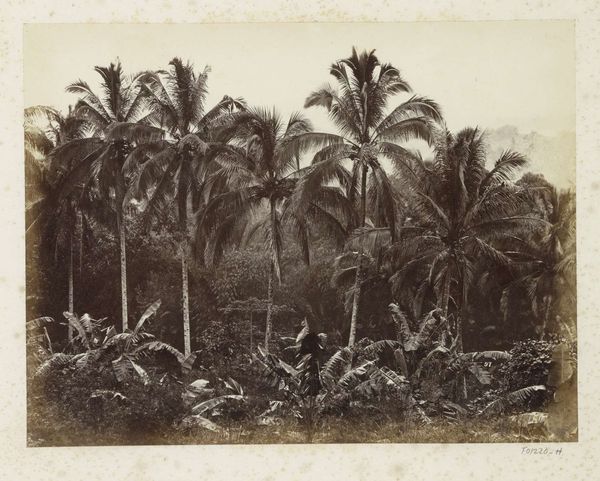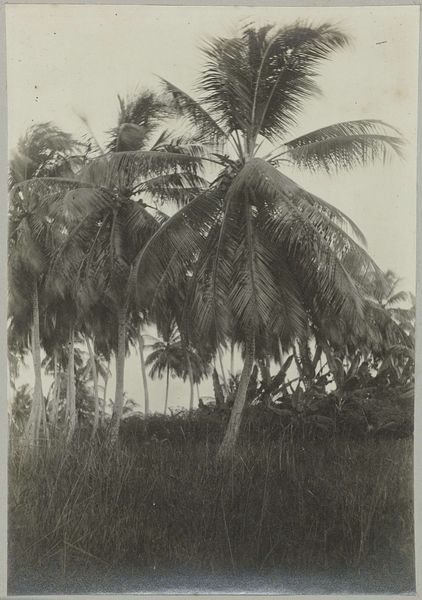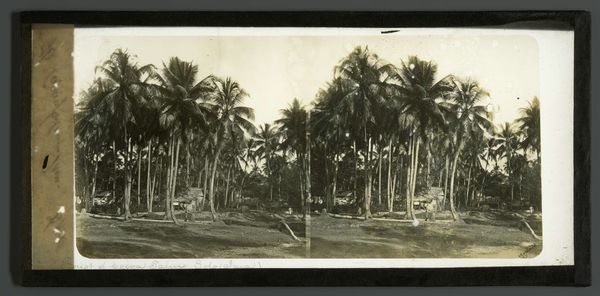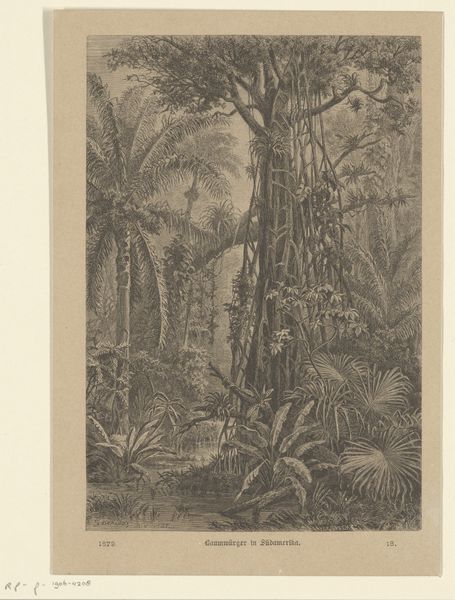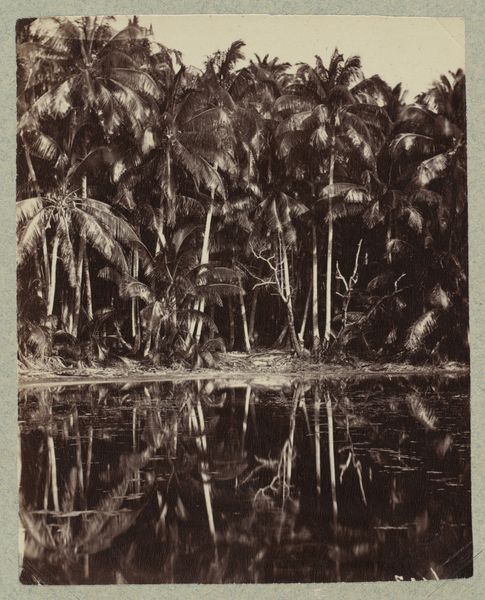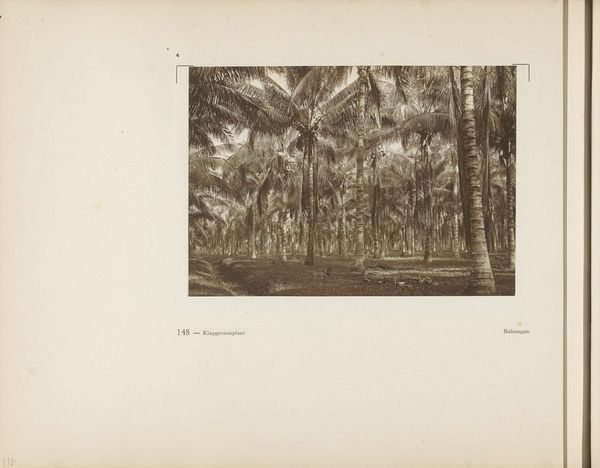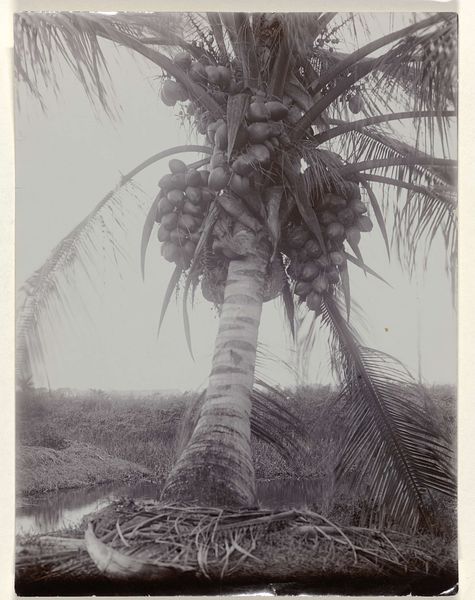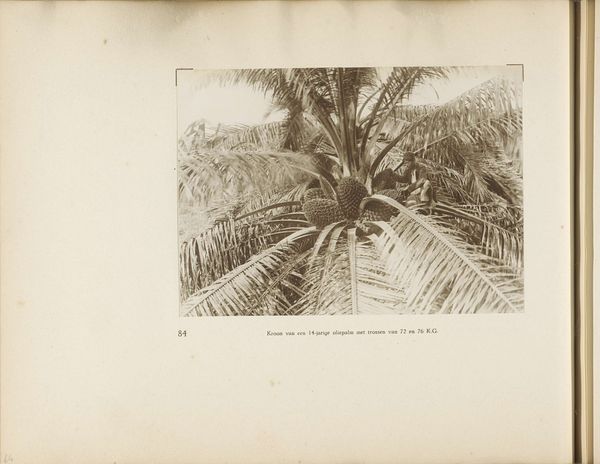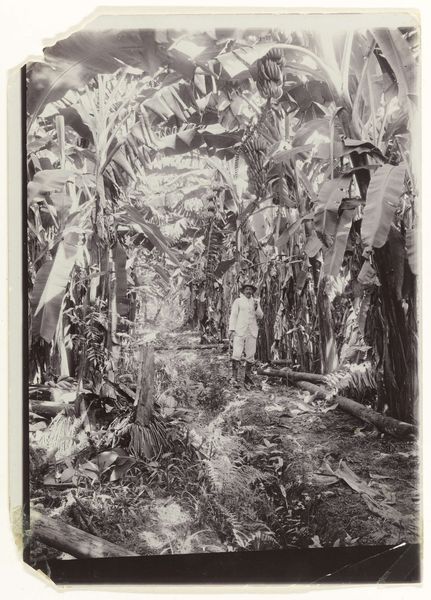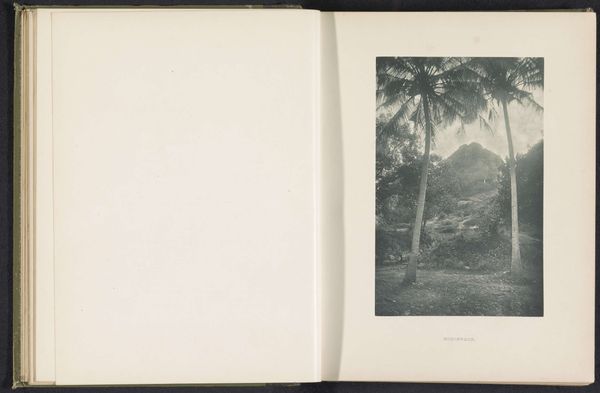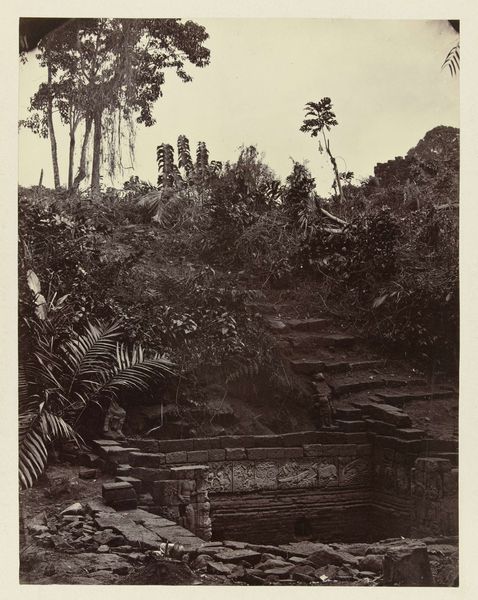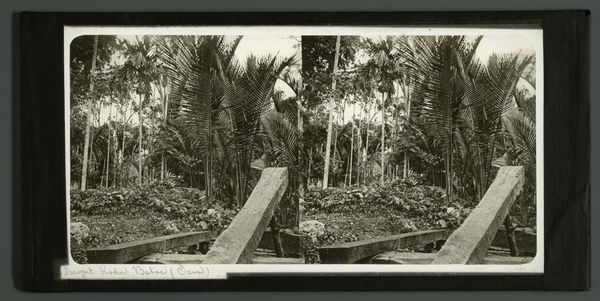
photography, gelatin-silver-print
#
landscape
#
photography
#
gelatin-silver-print
Dimensions: height 179 mm, width 108 mm
Copyright: Rijks Museum: Open Domain
Editor: Here we have W. McM. Woodworth’s gelatin silver print from before 1899, "Gezicht op palmbomen op Ngele Levu," which translates to "View of Palm Trees on Ngele Levu." It’s a pretty dense landscape scene dominated by palm trees. What historical perspective might we bring to this work? Curator: Well, we need to think about what photography of the Pacific islands represented at this time. How do you think images like this circulated? Editor: I imagine they would have been popular in publications, reaching audiences in Europe and America, right? Curator: Precisely. And what kind of image of Fiji does it project? A tranquil paradise, perhaps? This imagery, in that context, participated in constructing and circulating ideas about the islands – think of travel brochures and scientific studies from the period. Were these images serving solely as neutral documents, or did they bolster colonial narratives, presenting the islands as ripe for Western influence? Editor: That’s a really important point. The choice of focusing on ‘vegetation’ almost feels… suggestive, like framing the island in terms of its exploitable resources. Do you think the fact it’s a gelatin silver print adds anything to that idea? Curator: Absolutely. The very process – transforming the landscape into a reproducible image – is linked to Western industrial processes and its potential to control and manage nature and subjectivities, as this type of photography helped to inform colonial power dynamics by making lands and peoples accessible for documentation and distribution. Thinking about how photographic expeditions of the late 19th century contributed to this perception is useful here. Editor: It's sobering to consider how even a seemingly benign landscape can be interwoven with complex political undercurrents. Thank you. Curator: Indeed, remembering the role images played during colonial times certainly gives one plenty to reflect on, and the power that images continue to have now.
Comments
No comments
Be the first to comment and join the conversation on the ultimate creative platform.
